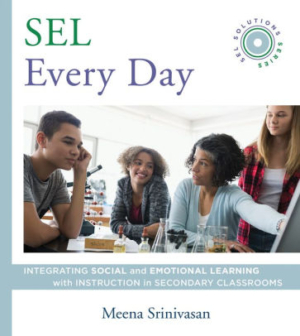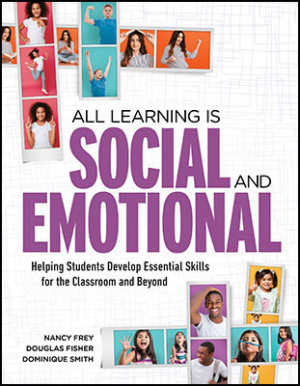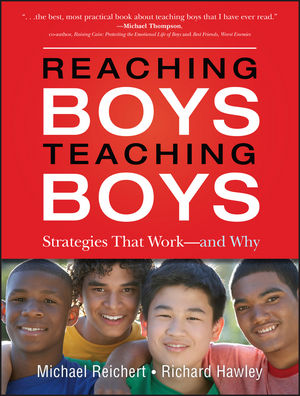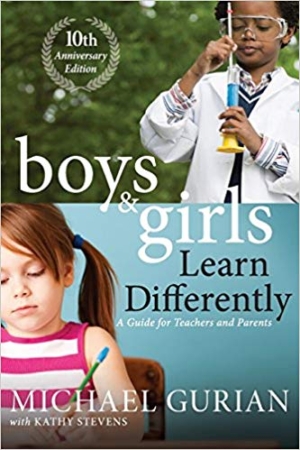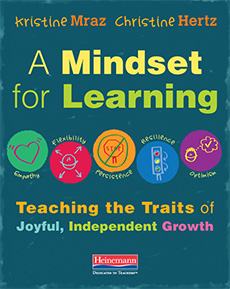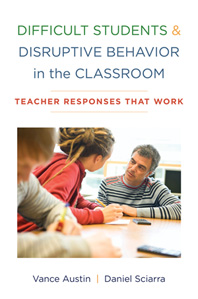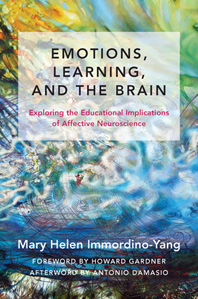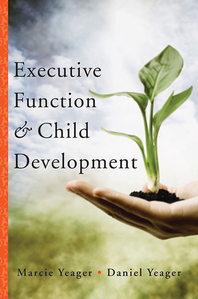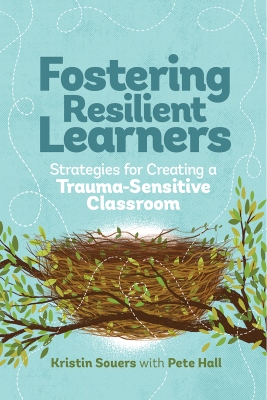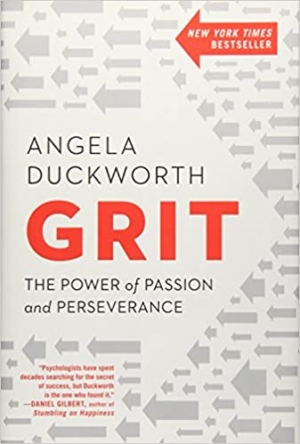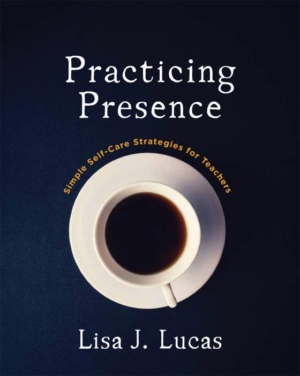-
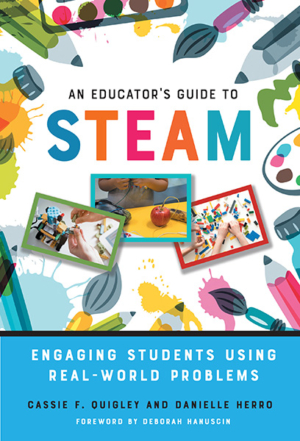
 ***This course fulfills the Washington State OSPI Science, Technology, Engineering and Math Clock hour Continuing Education Requirement If you have taken this course for graduate credit through ArmchairEd, you cannot take the same course for clock hours through ArmchairEdClockHours. STEAM—the integration of music, visual arts, and drama into daily STEM instruction—is proven to enhance student achievement in STEM subjects. Creative, real-world problem-solving is what working scientists and mathematicians do. But how do busy STEM educators weave arts activities into a sometimes-inflexible STEM curriculum? This practical course can be used to engage students in K-8 classrooms. Using a conceptual mode with classroom examples and recommendations to use key aspects of STEAM teaching in action, including creating the correct teaching environment, integrating STEAM content, and supporting students as they develop STEAM-related skills. The teaching model includes problems-based learning, student choice, technology integration, and teacher facilitation. Each chapter incorporates elements of connected learning, drawing on students’ interests that teachers can capitalize on when using STEAM to address real-world problems and make STEAM a schoolwide success. This course is great for educators, instructional coaches, principals, and administrators. Click Here to Buy An Educator's Guide to STEAM Direct from the Publisher Click Here to Buy From STEM to STEAM Direct from the Publisher Click Here to Download the Syllabus
***This course fulfills the Washington State OSPI Science, Technology, Engineering and Math Clock hour Continuing Education Requirement If you have taken this course for graduate credit through ArmchairEd, you cannot take the same course for clock hours through ArmchairEdClockHours. STEAM—the integration of music, visual arts, and drama into daily STEM instruction—is proven to enhance student achievement in STEM subjects. Creative, real-world problem-solving is what working scientists and mathematicians do. But how do busy STEM educators weave arts activities into a sometimes-inflexible STEM curriculum? This practical course can be used to engage students in K-8 classrooms. Using a conceptual mode with classroom examples and recommendations to use key aspects of STEAM teaching in action, including creating the correct teaching environment, integrating STEAM content, and supporting students as they develop STEAM-related skills. The teaching model includes problems-based learning, student choice, technology integration, and teacher facilitation. Each chapter incorporates elements of connected learning, drawing on students’ interests that teachers can capitalize on when using STEAM to address real-world problems and make STEAM a schoolwide success. This course is great for educators, instructional coaches, principals, and administrators. Click Here to Buy An Educator's Guide to STEAM Direct from the Publisher Click Here to Buy From STEM to STEAM Direct from the Publisher Click Here to Download the Syllabus -
 Feedback for Impact As the late Grant Wiggins wrote, "less teaching plus more feedback is the key to achieving greater learning." This is as true for educators as it is for the students we work with. In this issue, we will explore the key characteristics of effective, actionable feedback—whether provided in the classroom, following a teacher observation, or during a coaching conversation—and how schools can create cultures of effective feedback and make the most of feedback for growth. This course will look at feedback protocols and routines; evidence-based formative assessment strategies; best practices for differentiating and delivering feedback; and how to make feedback stick. Click Here to buy this journal, go to ascd.org, or call 1-800-933-2723. Click Here to download the course syllabus.
Feedback for Impact As the late Grant Wiggins wrote, "less teaching plus more feedback is the key to achieving greater learning." This is as true for educators as it is for the students we work with. In this issue, we will explore the key characteristics of effective, actionable feedback—whether provided in the classroom, following a teacher observation, or during a coaching conversation—and how schools can create cultures of effective feedback and make the most of feedback for growth. This course will look at feedback protocols and routines; evidence-based formative assessment strategies; best practices for differentiating and delivering feedback; and how to make feedback stick. Click Here to buy this journal, go to ascd.org, or call 1-800-933-2723. Click Here to download the course syllabus. -
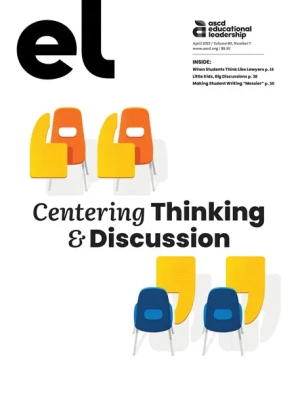 Centering Thinking and Discussion Skills Knowing how to think critically and deeply and to share one’s ideas with others are essential life skills—and have become increasingly necessary in our complex, polarized times. How can schools create structures, curriculum, student work, and expectations that center students’ ability to think critically, apply effective thinking dispositions in various disciplines, and discuss ideas with others in probing yet respectful ways? Possible subtopics include deeper learning, deliberation skills, civic engagement, project-based learning, performance assessment, and creativity. Click Here to buy this journal, go to ascd.org, or call 1-800-933-2723. Click Here to download the course syllabus.
Centering Thinking and Discussion Skills Knowing how to think critically and deeply and to share one’s ideas with others are essential life skills—and have become increasingly necessary in our complex, polarized times. How can schools create structures, curriculum, student work, and expectations that center students’ ability to think critically, apply effective thinking dispositions in various disciplines, and discuss ideas with others in probing yet respectful ways? Possible subtopics include deeper learning, deliberation skills, civic engagement, project-based learning, performance assessment, and creativity. Click Here to buy this journal, go to ascd.org, or call 1-800-933-2723. Click Here to download the course syllabus. -
 Can STEM Save the World? Can STEM Save the World? explores how educators can engage students of all levels in multidisciplinary, inclusive, and inquiry-driven STEM instruction that is directly relevant to the world today. STEM instruction that connects the classroom to our dynamic world not only fosters deeper learning, but also prepares young people to analyze and solve global challenges. The course explores how educators can engage students of all levels in multidisciplinary, inclusive, and inquiry-driven STEM instruction that is directly relevant to the world today. Click Here to buy this journal, go to ascd.org, or call 1-800-933-2723. Click Here to download the course syllabus.
Can STEM Save the World? Can STEM Save the World? explores how educators can engage students of all levels in multidisciplinary, inclusive, and inquiry-driven STEM instruction that is directly relevant to the world today. STEM instruction that connects the classroom to our dynamic world not only fosters deeper learning, but also prepares young people to analyze and solve global challenges. The course explores how educators can engage students of all levels in multidisciplinary, inclusive, and inquiry-driven STEM instruction that is directly relevant to the world today. Click Here to buy this journal, go to ascd.org, or call 1-800-933-2723. Click Here to download the course syllabus. -
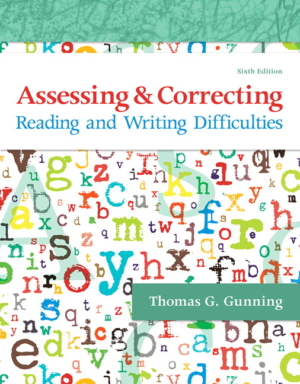 If you have taken this course for graduate credit through ArmchairEd, you cannot take the same course for clock hours through ArmchairEdClockHours. Click Here to buy the book direct from the publisher. Assessing and Correcting Reading and Writing Difficulties provides a comprehensive, practical approach that details—and illustrates through a wealth of examples—how to assess students and how to use assessment results to screen students, monitor progress, and provide effective instruction. Grounded in theory and research, yet practical in nature, this course provides 46 easy-to-follow, step-by-step sample lessons covering virtually every major skill or strategy for successfully assessing and instructing struggling readers of all ages. The emphasis is on teaching students’ strategies they can use independently for developing skills in word recognition, vocabulary, comprehension, reading in the content areas, writing, spelling, and studying. With extensive coverage of Response to Intervention and the impact of the Common Core State Standards, the course covers areas of assessment including basic concepts of tests and measurements; standardized measures, including curriculum-based instruments; and informal but highly regarded assessment methods such as the informal reading inventory, miscue analysis, running records, observation, think-alouds, checklists, conferences, rubrics, performance assessment holistic scoring of writing and portfolio assessment, and student self-assessment. It also includes extensive coverage of screening, progress monitoring, interim assessments, diagnosis, and outcome measures, with numerous suggestions for practice and reinforcement, including the use of technology. Click Here to download the course syllabus.
If you have taken this course for graduate credit through ArmchairEd, you cannot take the same course for clock hours through ArmchairEdClockHours. Click Here to buy the book direct from the publisher. Assessing and Correcting Reading and Writing Difficulties provides a comprehensive, practical approach that details—and illustrates through a wealth of examples—how to assess students and how to use assessment results to screen students, monitor progress, and provide effective instruction. Grounded in theory and research, yet practical in nature, this course provides 46 easy-to-follow, step-by-step sample lessons covering virtually every major skill or strategy for successfully assessing and instructing struggling readers of all ages. The emphasis is on teaching students’ strategies they can use independently for developing skills in word recognition, vocabulary, comprehension, reading in the content areas, writing, spelling, and studying. With extensive coverage of Response to Intervention and the impact of the Common Core State Standards, the course covers areas of assessment including basic concepts of tests and measurements; standardized measures, including curriculum-based instruments; and informal but highly regarded assessment methods such as the informal reading inventory, miscue analysis, running records, observation, think-alouds, checklists, conferences, rubrics, performance assessment holistic scoring of writing and portfolio assessment, and student self-assessment. It also includes extensive coverage of screening, progress monitoring, interim assessments, diagnosis, and outcome measures, with numerous suggestions for practice and reinforcement, including the use of technology. Click Here to download the course syllabus. -
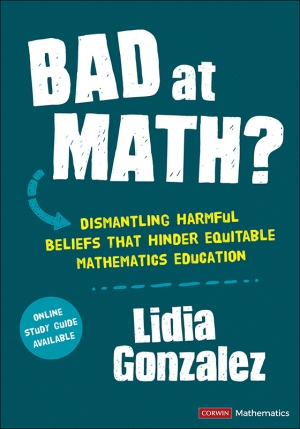
 If you have taken this course for graduate credit through ArmchairEd, you cannot take the same course for clock hours through ArmchairEdClockHours. “I’m bad at math.” It’s a line that society tends to accept without examination—after all, some people just aren’t “math people,” As with other essential skills, we need to expose the stereotypes, challenge the negative mindsets, and finally confront the systemic opportunity gaps in math education, and replace them with a new vision for what math is, who it’s for, and who can excel at it. This course covers the following research on teacher and student mindsets and their effect on student achievement, differentiation tools, and suggestions for deeper learning on all aspects of a positive and equitable vision of math education. Click Here to Buy Bad at Math? direct from the publisher Click Here to preview the course syllabus
If you have taken this course for graduate credit through ArmchairEd, you cannot take the same course for clock hours through ArmchairEdClockHours. “I’m bad at math.” It’s a line that society tends to accept without examination—after all, some people just aren’t “math people,” As with other essential skills, we need to expose the stereotypes, challenge the negative mindsets, and finally confront the systemic opportunity gaps in math education, and replace them with a new vision for what math is, who it’s for, and who can excel at it. This course covers the following research on teacher and student mindsets and their effect on student achievement, differentiation tools, and suggestions for deeper learning on all aspects of a positive and equitable vision of math education. Click Here to Buy Bad at Math? direct from the publisher Click Here to preview the course syllabus -
 If you have taken this course for graduate credit through ArmchairEd, you cannot take the same course for clock hours through ArmchairEdClockHours. Click Here to buy the book direct from the publisher. While mathematicians describe mathematics as playful, beautiful, creative, and captivating, many students describe math class as boring, stressful, useless, and humiliating. This course reflects the years of time spent with highly skilled math teachers in a diverse range of settings and grades. It is filled with new thinking from vibrant classrooms, covering practical teaching techniques to try in your own classroom. These strategies will stimulate students to connect ideas, with rich tasks that encourage students to wonder, generalize, conjecture, and persevere, and collaborate. The course aims to develop instructional techniques that will make the match classes we teach so much better than the math classes we took. Click Here to download the course syllabus.
If you have taken this course for graduate credit through ArmchairEd, you cannot take the same course for clock hours through ArmchairEdClockHours. Click Here to buy the book direct from the publisher. While mathematicians describe mathematics as playful, beautiful, creative, and captivating, many students describe math class as boring, stressful, useless, and humiliating. This course reflects the years of time spent with highly skilled math teachers in a diverse range of settings and grades. It is filled with new thinking from vibrant classrooms, covering practical teaching techniques to try in your own classroom. These strategies will stimulate students to connect ideas, with rich tasks that encourage students to wonder, generalize, conjecture, and persevere, and collaborate. The course aims to develop instructional techniques that will make the match classes we teach so much better than the math classes we took. Click Here to download the course syllabus. -
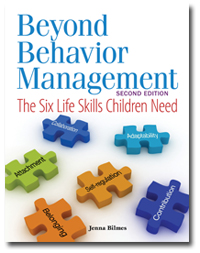 If you have taken this course for graduate credit through ArmchairEd, you cannot take the same course for clock hours through ArmchairEdClockHours. Click Here to buy the book direct from the publisher. All children, not just those with challenging behaviors, need the social and emotional tools to grow and thrive on their own. This course provides everything you need to help all children build and use six essential life skills: attachment, belonging, self-regulation, collaboration, contribution, and adaptability. Developed and tested in the classroom, this strength-based approach includes strategies, examples of supportive interactions, and special activities to help you manage challenging behaviors and foster social and emotional development in all children. Educators will be able to teach children to exhibit more prosocial behaviors, work better as a classroom community, and become excited and active learners. Aimed at the early childhood level. Click Here to download the course syllabus.
If you have taken this course for graduate credit through ArmchairEd, you cannot take the same course for clock hours through ArmchairEdClockHours. Click Here to buy the book direct from the publisher. All children, not just those with challenging behaviors, need the social and emotional tools to grow and thrive on their own. This course provides everything you need to help all children build and use six essential life skills: attachment, belonging, self-regulation, collaboration, contribution, and adaptability. Developed and tested in the classroom, this strength-based approach includes strategies, examples of supportive interactions, and special activities to help you manage challenging behaviors and foster social and emotional development in all children. Educators will be able to teach children to exhibit more prosocial behaviors, work better as a classroom community, and become excited and active learners. Aimed at the early childhood level. Click Here to download the course syllabus. -
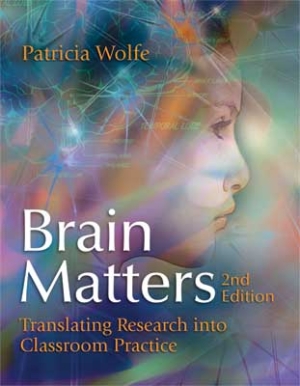 If you have taken this course for graduate credit through ArmchairEd, you cannot take the same course for clock hours through ArmchairEdClockHours. Click Here to buy the book Brain Matters direct from the publisher. This course utilizes cutting-edge neuroscience research to guide teaching. The first third of the book describes neuroscience, brain anatomy, and physiology. The middle part of the book discusses how the brain, encodes, manipulates and stores information. This information-processing model provides a first look at implications of research for practice--why meaning is essential for attention, how emotion can enhance or impede learning, and how different types of rehearsal are necessary for different types of learning. practical classroom applications and brain-compatible teaching strategies. The last third shows how to use simulations, projects, problem-based learning, graphic organizers, music, rhyme and rhythm, writing, active engagement, and mnemonics. Each chapter provides examples using brief scenarios from actual classroom practice, from the lower elementary grades to high school. Click Here to download the course syllabus.
If you have taken this course for graduate credit through ArmchairEd, you cannot take the same course for clock hours through ArmchairEdClockHours. Click Here to buy the book Brain Matters direct from the publisher. This course utilizes cutting-edge neuroscience research to guide teaching. The first third of the book describes neuroscience, brain anatomy, and physiology. The middle part of the book discusses how the brain, encodes, manipulates and stores information. This information-processing model provides a first look at implications of research for practice--why meaning is essential for attention, how emotion can enhance or impede learning, and how different types of rehearsal are necessary for different types of learning. practical classroom applications and brain-compatible teaching strategies. The last third shows how to use simulations, projects, problem-based learning, graphic organizers, music, rhyme and rhythm, writing, active engagement, and mnemonics. Each chapter provides examples using brief scenarios from actual classroom practice, from the lower elementary grades to high school. Click Here to download the course syllabus. -
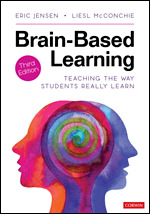
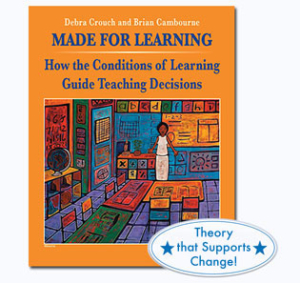 This course will be dropped on June 30, 2024 If you have taken this course for graduate credit through ArmchairEd, you cannot take the same course for clock hours through ArmchairEdClockHours. This course outlines brain-based educational theories and techniques that can be used to transform classrooms and help children learn better. It presents experiental learning techniques that teachers can use to create an environment and enriched curriculum that take into account the needs of the developing child’s brain and allow both boys and girls to gain maximum learning opportunities, increase academic opportunities, and improve behavior. It provides the latest scientific research on the differences between boys’ and girls’ brains, neurological development, hormonal effects, behavior, and learning needs. Click Here to Purchase Brain-Based Learning direct from the publisher Click Here to Purchase Made for Learning direct from the publisher. Click Here to download the syllabus.
This course will be dropped on June 30, 2024 If you have taken this course for graduate credit through ArmchairEd, you cannot take the same course for clock hours through ArmchairEdClockHours. This course outlines brain-based educational theories and techniques that can be used to transform classrooms and help children learn better. It presents experiental learning techniques that teachers can use to create an environment and enriched curriculum that take into account the needs of the developing child’s brain and allow both boys and girls to gain maximum learning opportunities, increase academic opportunities, and improve behavior. It provides the latest scientific research on the differences between boys’ and girls’ brains, neurological development, hormonal effects, behavior, and learning needs. Click Here to Purchase Brain-Based Learning direct from the publisher Click Here to Purchase Made for Learning direct from the publisher. Click Here to download the syllabus. -
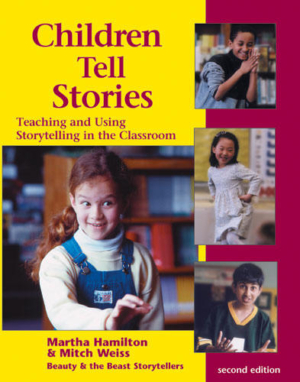 If you have taken this course for graduate credit through ArmchairEd, you cannot take the same course for clock hours through ArmchairEdClockHours. This course includes the newest research, links to current learning standards, and a variety of multicultural stories and resources that has validated the importance of storytelling in education. Literacy is more effectively taught when the language arts, such as reading, writing, speaking, listening, viewing, and visually representing, are seen as connected and equally important. Storytelling is one of the best ways to teach all of these literacy skills. When children engage in stories, they gain command over language, and increase their ability to understand detail and how stories hang together. If students are better at telling stories, they become better at writing and reading them. Course book also includes a DVD. Click Here to download the syllabus for this course. Click Here to buy the book directly from the publisher. What educators are saying about Children Tell Stories: I'm glad I have started on this exploration of teaching differently. I feel like it has renewed my love for teaching, back 18 years since I walked into my first classroom, as the teacher. The authors and examples in both the book and on the dvd empowered me to take the first step and try, that is really all I expect from my students everyday, no matter what the task, yet it was a little scary, I admit. I don't think I have thought about that for a long time, about the scariness of trying something different and new. Having experienced that feeling again, I have a lot more empathy for my students who come to school almost everyday and try something new! I hope I can keep learning and practicing stories to share with my students, in those little breaks in our day. I liked how it felt to be connected to them, and I want to feel that with every group of students I teach. I want to know them, and I want them to know me.~~Kristine K.
If you have taken this course for graduate credit through ArmchairEd, you cannot take the same course for clock hours through ArmchairEdClockHours. This course includes the newest research, links to current learning standards, and a variety of multicultural stories and resources that has validated the importance of storytelling in education. Literacy is more effectively taught when the language arts, such as reading, writing, speaking, listening, viewing, and visually representing, are seen as connected and equally important. Storytelling is one of the best ways to teach all of these literacy skills. When children engage in stories, they gain command over language, and increase their ability to understand detail and how stories hang together. If students are better at telling stories, they become better at writing and reading them. Course book also includes a DVD. Click Here to download the syllabus for this course. Click Here to buy the book directly from the publisher. What educators are saying about Children Tell Stories: I'm glad I have started on this exploration of teaching differently. I feel like it has renewed my love for teaching, back 18 years since I walked into my first classroom, as the teacher. The authors and examples in both the book and on the dvd empowered me to take the first step and try, that is really all I expect from my students everyday, no matter what the task, yet it was a little scary, I admit. I don't think I have thought about that for a long time, about the scariness of trying something different and new. Having experienced that feeling again, I have a lot more empathy for my students who come to school almost everyday and try something new! I hope I can keep learning and practicing stories to share with my students, in those little breaks in our day. I liked how it felt to be connected to them, and I want to feel that with every group of students I teach. I want to know them, and I want them to know me.~~Kristine K. -
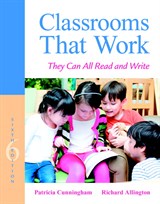 If you have taken this course for graduate credit through ArmchairEd, you cannot take the same course for clock hours through ArmchairEdClockHours. Click Here to buy the book Classrooms That Work 6th edition direct from Amazon. This popular course provides comprehensive, balanced, practical literacy instruction for all students in today’s increasingly diverse classrooms, especially students from culturally diverse backgrounds and those struggling with reading and writing. As the Common Core raises the bar for all children, Classrooms That Work helps educators meet the challenges by presenting lesson frameworks for providing reading and language arts instruction that helps all children achieve their highest literacy levels. In a clear, friendly writing style, the authors emphasize the importance of promoting the integration of phonics and literature-based process writing and reading instruction to enhance all students’ learning and reading skills. The book clarifies concepts, defines key terms, and offers just the right balance of research and practical coverage to make the content complete without being overwhelming. Click Here to download a course syllabus. What Educators are saying about Classrooms That Work: I really enjoyed reading all the ideas contained in the Rich Resources boxes. I am excited to try some of these suggestions in my classroom. Classrooms that Work is a wonderful resource for all elementary school teachers. It holds an abundance of practical and easily implemented ideas for teachers to create classrooms where children will thrive in an environment that fosters a love of reading and writing. L.S., New Jersey
If you have taken this course for graduate credit through ArmchairEd, you cannot take the same course for clock hours through ArmchairEdClockHours. Click Here to buy the book Classrooms That Work 6th edition direct from Amazon. This popular course provides comprehensive, balanced, practical literacy instruction for all students in today’s increasingly diverse classrooms, especially students from culturally diverse backgrounds and those struggling with reading and writing. As the Common Core raises the bar for all children, Classrooms That Work helps educators meet the challenges by presenting lesson frameworks for providing reading and language arts instruction that helps all children achieve their highest literacy levels. In a clear, friendly writing style, the authors emphasize the importance of promoting the integration of phonics and literature-based process writing and reading instruction to enhance all students’ learning and reading skills. The book clarifies concepts, defines key terms, and offers just the right balance of research and practical coverage to make the content complete without being overwhelming. Click Here to download a course syllabus. What Educators are saying about Classrooms That Work: I really enjoyed reading all the ideas contained in the Rich Resources boxes. I am excited to try some of these suggestions in my classroom. Classrooms that Work is a wonderful resource for all elementary school teachers. It holds an abundance of practical and easily implemented ideas for teachers to create classrooms where children will thrive in an environment that fosters a love of reading and writing. L.S., New Jersey -
 If you have taken this course for graduate credit through ArmchairEd, you cannot take the same course for clock hours through ArmchairEdClockHours. Click Here to buy the book Conversations with a Poet direct from the publisher. This course is divided into two sections. Section I discusses writing and the teaching of poetry, giving inside information not typically in educational courses and texts. The rational for teaching poetry and for teaching different poetry forms is included. Section II targets sixteen specific and different poetry forms, giving form, samples, and bibiolographical citations as models. Types of poetry in this course include the following: acrostic, ballad, blues, Cinquain, Haiku, limerick, riddle, sonnet, and many others. Click Here to download the course syllabus.
If you have taken this course for graduate credit through ArmchairEd, you cannot take the same course for clock hours through ArmchairEdClockHours. Click Here to buy the book Conversations with a Poet direct from the publisher. This course is divided into two sections. Section I discusses writing and the teaching of poetry, giving inside information not typically in educational courses and texts. The rational for teaching poetry and for teaching different poetry forms is included. Section II targets sixteen specific and different poetry forms, giving form, samples, and bibiolographical citations as models. Types of poetry in this course include the following: acrostic, ballad, blues, Cinquain, Haiku, limerick, riddle, sonnet, and many others. Click Here to download the course syllabus. -
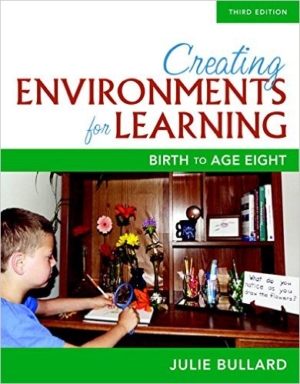 If you have taken this course for graduate credit through ArmchairEd, you cannot take the same course for clock hours through ArmchairEdClockHours. Click Here to buy the book direct from the publisher This course focuses on the development and implementation of quality learning environments for children. It is appropriate for both early childhood preschool and elementary teachers. It is representative of the interests, developmental levels, and cultural and geographic backgrounds of the typical children in today’s classrooms. The latest research on early childhood education is provided, to design early childhood environments, plan curriculum, and defend the use of play as a learning method. Thus, research, curriculum standards, and play-based learning is provided, resulting in a course that provides practical and interesting information on the developing the following centers: dramatic play centers, manipulative and sensory centers, block and building centers, literacy centers, science centers, and art centers. Creating outdoor environments, integrating families, and integrating technology is also emphasized. Click Here to download the course syllabus.
If you have taken this course for graduate credit through ArmchairEd, you cannot take the same course for clock hours through ArmchairEdClockHours. Click Here to buy the book direct from the publisher This course focuses on the development and implementation of quality learning environments for children. It is appropriate for both early childhood preschool and elementary teachers. It is representative of the interests, developmental levels, and cultural and geographic backgrounds of the typical children in today’s classrooms. The latest research on early childhood education is provided, to design early childhood environments, plan curriculum, and defend the use of play as a learning method. Thus, research, curriculum standards, and play-based learning is provided, resulting in a course that provides practical and interesting information on the developing the following centers: dramatic play centers, manipulative and sensory centers, block and building centers, literacy centers, science centers, and art centers. Creating outdoor environments, integrating families, and integrating technology is also emphasized. Click Here to download the course syllabus. -
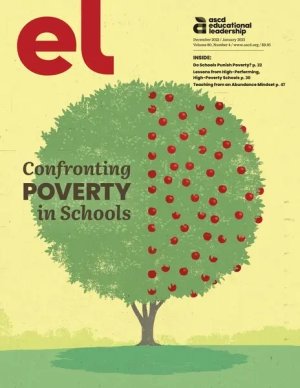 December 2022/January 2023--Confronting Poverty in Schools (10 Clock Hours) The prolonged period of remote learning in 2020–21 reinforced the value of self-directed learning—but educators have long seen independent learning as a hallmark of student engagement and intellectual growth. This course will look at how schools can integrate instructional strategies that support self-directed work and exploration and help students take greater ownership of their own learning. Subtopics to be addressed include personalization, deeper learning, amplifying student voice and agency, academic self-monitoring, and problem-based learning. Click Here to buy this journal, go to ascd.org, or call 1-800-933-2723. Click Here to download the course syllabus.
December 2022/January 2023--Confronting Poverty in Schools (10 Clock Hours) The prolonged period of remote learning in 2020–21 reinforced the value of self-directed learning—but educators have long seen independent learning as a hallmark of student engagement and intellectual growth. This course will look at how schools can integrate instructional strategies that support self-directed work and exploration and help students take greater ownership of their own learning. Subtopics to be addressed include personalization, deeper learning, amplifying student voice and agency, academic self-monitoring, and problem-based learning. Click Here to buy this journal, go to ascd.org, or call 1-800-933-2723. Click Here to download the course syllabus. -
 Literacy is not just for language arts and English classes! This issue will look at how schools can embed meaningful reading and writing practice in all content areas, exploring both discipline-specific literacy practices and the role of literacy in increasing conceptual understanding and academic growth. Key topics include authentic interdisciplinary projects, research and source analysis, media literacy, technology integration, teacher professional development, working with struggling older readers, and strategic text selection. Click Here to buy this journal, go to ascd.org, or call 1-800-933-2723. Click Here to download the course syllabus.
Literacy is not just for language arts and English classes! This issue will look at how schools can embed meaningful reading and writing practice in all content areas, exploring both discipline-specific literacy practices and the role of literacy in increasing conceptual understanding and academic growth. Key topics include authentic interdisciplinary projects, research and source analysis, media literacy, technology integration, teacher professional development, working with struggling older readers, and strategic text selection. Click Here to buy this journal, go to ascd.org, or call 1-800-933-2723. Click Here to download the course syllabus. -
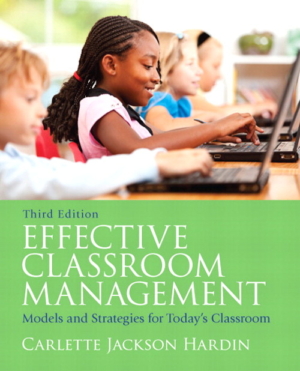 If you have taken this course for graduate credit through ArmchairEd, you cannot take the same course for clock hours through ArmchairEdClockHours. Click Here to buy the book Effective Classroom Management direct from the publisher. This course offers a solid foundation for developing an individualized classroom management plan that suits educators’ unique instructional philosophy. A variety of models of classroom management are examined according to their primary focus; classroom management as discipline, classroom management as a system, and classroom management as instruction. Each of the models effectively addresses current Interstate New Teacher Assessment and Support Consortium (INTASC) standards. A review of research on classroom management is presented. Two new innovative models of classroom management, including character education, and focus on at-risk students and classroom safety are provided. Click Here to download the course syllabus.
If you have taken this course for graduate credit through ArmchairEd, you cannot take the same course for clock hours through ArmchairEdClockHours. Click Here to buy the book Effective Classroom Management direct from the publisher. This course offers a solid foundation for developing an individualized classroom management plan that suits educators’ unique instructional philosophy. A variety of models of classroom management are examined according to their primary focus; classroom management as discipline, classroom management as a system, and classroom management as instruction. Each of the models effectively addresses current Interstate New Teacher Assessment and Support Consortium (INTASC) standards. A review of research on classroom management is presented. Two new innovative models of classroom management, including character education, and focus on at-risk students and classroom safety are provided. Click Here to download the course syllabus. -
 Beyond the Textbook: Content and Curriculum This course will look at the many facets of seeking out and developing effective educational content at a time when resources are multiplying and becoming increasingly decentralized. Given the centrality of sound curriculum to teaching and learning (and the potential for conflict around curricular issues), how can school leaders and educators better evaluate curriculum resources and ensure they support instructional goals and stakeholder expectations? How can teams of educators more effectively curate, create, and share impactful lesson materials? Who should be making decisions about curriculum content, anyway? And what policies or strategies are needed to ensure effectiveness and coherence? Click Here to buy this journal, go to ascd.org, or call 1-800-933-2723. Click Here to download the course syllabus.
Beyond the Textbook: Content and Curriculum This course will look at the many facets of seeking out and developing effective educational content at a time when resources are multiplying and becoming increasingly decentralized. Given the centrality of sound curriculum to teaching and learning (and the potential for conflict around curricular issues), how can school leaders and educators better evaluate curriculum resources and ensure they support instructional goals and stakeholder expectations? How can teams of educators more effectively curate, create, and share impactful lesson materials? Who should be making decisions about curriculum content, anyway? And what policies or strategies are needed to ensure effectiveness and coherence? Click Here to buy this journal, go to ascd.org, or call 1-800-933-2723. Click Here to download the course syllabus. -
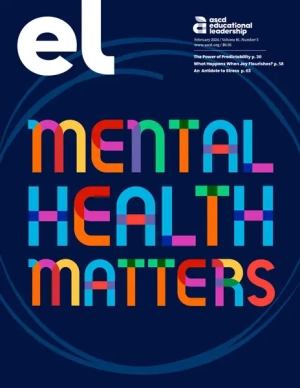 Educators have long understood how mental health affects students’ engagement and success. Events of the last few years have underscored the urgency of attending to students’ psychological safety and well-being. This issue will seek to raise awareness of current student mental health challenges and look at ways schools can better support students’ psychological and emotional wellness—including through partnerships, relationship building, crisis-response strategies, professional development, and ongoing care and resources. Click Here to buy this journal, go to ascd.org, or call 1-800-933-2723. Click Here to download the course syllabus.
Educators have long understood how mental health affects students’ engagement and success. Events of the last few years have underscored the urgency of attending to students’ psychological safety and well-being. This issue will seek to raise awareness of current student mental health challenges and look at ways schools can better support students’ psychological and emotional wellness—including through partnerships, relationship building, crisis-response strategies, professional development, and ongoing care and resources. Click Here to buy this journal, go to ascd.org, or call 1-800-933-2723. Click Here to download the course syllabus. -

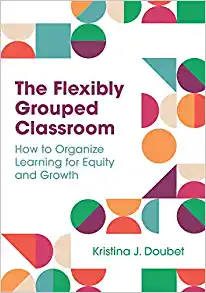 This course will be dropped on June 30, 2024 If you have taken this course for graduate credit through ArmchairEd, you cannot take the same course for clock hours through ArmchairEdClockHours. Unlike traditional grouping, which typically puts like with like or combines students without regard to the best way to promote their individual growth, flexible and learning-centered grouping is both purposeful and fluid, regularly combining and recombining different students in different ways to pursue a wide range of academic and affective goals. In this course, you will learn to: In this course, you will learn:
This course will be dropped on June 30, 2024 If you have taken this course for graduate credit through ArmchairEd, you cannot take the same course for clock hours through ArmchairEdClockHours. Unlike traditional grouping, which typically puts like with like or combines students without regard to the best way to promote their individual growth, flexible and learning-centered grouping is both purposeful and fluid, regularly combining and recombining different students in different ways to pursue a wide range of academic and affective goals. In this course, you will learn to: In this course, you will learn:-
What it means for teachers to honor themselves, each learner, and the content they teach.
-
How to assemble a curriculum that ignites students' imaginations and drives discovery.
-
How to guide classroom experiences that develop the mind of each learner in accordance with that learner's marvelous individuality.
-
How to shape curriculum, assessment, and instruction to support both equity and excellence.
-
-
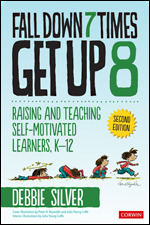
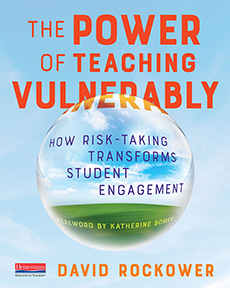 If you have taken this course for graduate credit through ArmchairEd, you cannot take the same course for clock hours through ArmchairEdClockHours. Perhaps more now than at any other time in modern history, our students need a feeling of connectedness at school. They need to feel seen, heard, understood, and known in our classrooms. And it begins with us. As middle and high school teachers, we have the power to inspire a whole new level of engagement with the students in front of us. This course describes the positive student relationships that lies in our capacity to teach with vulnerability—to bring our authentic selves into the classroom. Failure is not only a possibility for learners during these challenging times, but a productive, concrete way of gaining ground. How can parents and educators teach kids to turn failure into progress toward success? Learn what to say and what not to say to truly help kids self-motivate and become independent, lifelong learners. Create a deeper understanding of how motivation works along with new, practical, research-driven strategies for spurring learners to thrive. Kids are bound to stumble and fall, but by capitalizing on knowledge and the latest research on motivation, we can equip them to stand up and move forward, pointing them on the route to success. Click Here to Buy Fall Down Seven Times, Get Up Eight direct from the publisher Click Here to Buy The Power of Teaching Vulnerably direct from the publisher Click Here to preview the course syllabus.
If you have taken this course for graduate credit through ArmchairEd, you cannot take the same course for clock hours through ArmchairEdClockHours. Perhaps more now than at any other time in modern history, our students need a feeling of connectedness at school. They need to feel seen, heard, understood, and known in our classrooms. And it begins with us. As middle and high school teachers, we have the power to inspire a whole new level of engagement with the students in front of us. This course describes the positive student relationships that lies in our capacity to teach with vulnerability—to bring our authentic selves into the classroom. Failure is not only a possibility for learners during these challenging times, but a productive, concrete way of gaining ground. How can parents and educators teach kids to turn failure into progress toward success? Learn what to say and what not to say to truly help kids self-motivate and become independent, lifelong learners. Create a deeper understanding of how motivation works along with new, practical, research-driven strategies for spurring learners to thrive. Kids are bound to stumble and fall, but by capitalizing on knowledge and the latest research on motivation, we can equip them to stand up and move forward, pointing them on the route to success. Click Here to Buy Fall Down Seven Times, Get Up Eight direct from the publisher Click Here to Buy The Power of Teaching Vulnerably direct from the publisher Click Here to preview the course syllabus. -
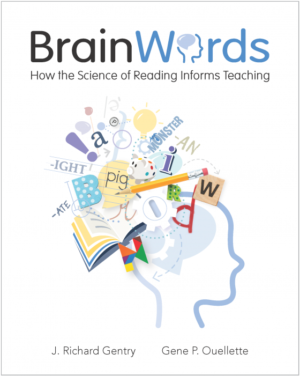
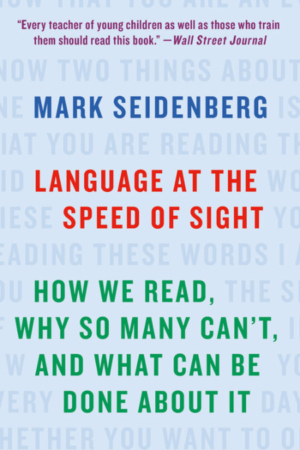 If you have taken this course for graduate credit through ArmchairEd, you cannot take the same course for clock hours through ArmchairEdClockHours.
If you have taken this course for graduate credit through ArmchairEd, you cannot take the same course for clock hours through ArmchairEdClockHours.Understanding the science of reading is more important than ever. This course draws on cutting-edge research in machine learning, linguistics, and early childhood development. The past two decades have brought giant leaps in our understanding of how the brain works. In this course, you will learn how children’s brains develop as they become readers and discover ways you can take concrete steps to promote this critical developmental passage.
Using a research-based framework of “brain words”—dictionaries in the brain where students store and automatically access sounds, spellings, and meanings—the course offers a wealth of information that will transform thinking and practice:- Reading and neurological circuitry, including evidence that spelling is at the core of the reading brain
- Tools to recognize what works, what doesn’t, and why
- Practical classroom activities for daily teaching and student assessment
- Insights about what brain research tells us about whole language and phonics-first movements
- Deepened understanding of dyslexia through the enhanced lens of brain science
-
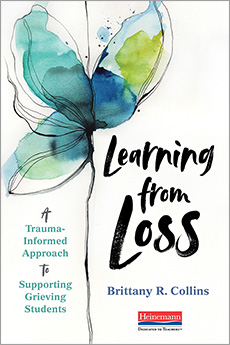 This course will be dropped on June 30, 2024 If you have taken this course for graduate credit through ArmchairEd, you cannot take the same course for clock hours through ArmchairEdClockHours.
This course will be dropped on June 30, 2024 If you have taken this course for graduate credit through ArmchairEd, you cannot take the same course for clock hours through ArmchairEdClockHours.Learning from Loss is an essential guide to getting started with grief work, providing a path that can help determine the best course of action in the wake of a loss that impacts a student or school community. The course includes research, stories, strategies, activities, and reflection questions that offer a map to navigate grief-responsive classroom practices. The course also includes suggestions for collaborating with a school counselor or other trained intervention professional when available, as well as alternatives if you do not.
Create a trauma-informed, grief-responsive classroom, and discover tools to make a difference in the lives of students while protecting your own needs as well.
Click Here to buy Learning from Loss direct from the publisher Click Here to preview the course syllabus. -

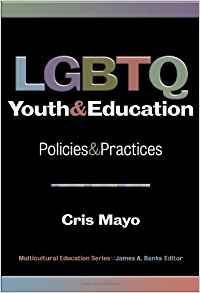 If you have taken this course for graduate credit through ArmchairEd, you cannot take the same course for clock hours through ArmchairEdClockHours. Based on the diverse experiences of LGBTQ students and their allies, this essential course brings together the major issues that schools must address to improve the educational outcomes for gender and sexual minority students—as well as all students. The course highlights how educators can make their schools more supportive of LGBTQ students’ positive development and academic success. It covers emerging practices such as creating an LGBTQ-inclusive curriculum, fostering a whole-school climate that is support of LGBTQ students; and initiating effective community outreach programs. Click Here to Buy Safe Is Not Enough: Better Schools for LGBTQ Students Direct from the Publisher Click Here to Buy LGBTQ Youth and Education: Policies and Practices (Second Edition) Direct from the Publisher Click Here to preview the Syllabus
If you have taken this course for graduate credit through ArmchairEd, you cannot take the same course for clock hours through ArmchairEdClockHours. Based on the diverse experiences of LGBTQ students and their allies, this essential course brings together the major issues that schools must address to improve the educational outcomes for gender and sexual minority students—as well as all students. The course highlights how educators can make their schools more supportive of LGBTQ students’ positive development and academic success. It covers emerging practices such as creating an LGBTQ-inclusive curriculum, fostering a whole-school climate that is support of LGBTQ students; and initiating effective community outreach programs. Click Here to Buy Safe Is Not Enough: Better Schools for LGBTQ Students Direct from the Publisher Click Here to Buy LGBTQ Youth and Education: Policies and Practices (Second Edition) Direct from the Publisher Click Here to preview the Syllabus -
 If you have taken this course for graduate credit through ArmchairEd, you cannot take the same course for clock hours through ArmchairEdClockHours. This course is rich and comprehensive, with practical insights to the frontier of early literacy. Grounded in research and extensive experience in prekindergarten classrooms the course demonstrates how to:
If you have taken this course for graduate credit through ArmchairEd, you cannot take the same course for clock hours through ArmchairEdClockHours. This course is rich and comprehensive, with practical insights to the frontier of early literacy. Grounded in research and extensive experience in prekindergarten classrooms the course demonstrates how to:- Create a classroom community that is play-based, and prepares children for the literacy-rich world in which they live
- Promote constructive learning through inquiry
- Recognize the language and literacy behaviors and understandings that are appropriate instructional goals for preschoolers
- Use powerful and playful ways to guide children to learn about letters, sounds, and words
- Support emergent readers and writers through an array of literacy activities.
-
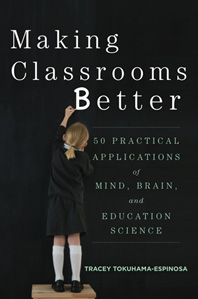 If you have taken this course for graduate credit through ArmchairEd, you cannot take the same course for clock hours through ArmchairEdClockHours. Click Here to buy the book direct from the publisher. Designing educational experiences without knowledge of the brain is like designing a glove without knowledge of the hand. Making Classrooms Better takes this concept a step further, building from general knowledge of brain-based education science and current educational research to offer specific suggestions for how teachers can improve student learning outcomes. Covering a range of subjects, from creating an optimal classroom climate to maximizing metacognitive skill development, this well-researched, state-of-the-art course is an essential resource for highly effective practices that teachers, administrators, and curriculum planners can easily use. The course provides a practical overview of teaching from a Mind, Brain, and Education perspective through an understanding of the intersection of the fields of neuroscience, psychology, and pedagogy. It shares 50 evidence-based classroom “best practices” that have a proven positive impact on student learning outcomes and explains why they work. Click Here to download the course syllabus.
If you have taken this course for graduate credit through ArmchairEd, you cannot take the same course for clock hours through ArmchairEdClockHours. Click Here to buy the book direct from the publisher. Designing educational experiences without knowledge of the brain is like designing a glove without knowledge of the hand. Making Classrooms Better takes this concept a step further, building from general knowledge of brain-based education science and current educational research to offer specific suggestions for how teachers can improve student learning outcomes. Covering a range of subjects, from creating an optimal classroom climate to maximizing metacognitive skill development, this well-researched, state-of-the-art course is an essential resource for highly effective practices that teachers, administrators, and curriculum planners can easily use. The course provides a practical overview of teaching from a Mind, Brain, and Education perspective through an understanding of the intersection of the fields of neuroscience, psychology, and pedagogy. It shares 50 evidence-based classroom “best practices” that have a proven positive impact on student learning outcomes and explains why they work. Click Here to download the course syllabus. -
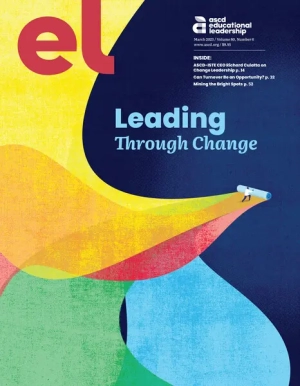 Leading Through Change Change is inevitable, but often uncomfortable. Creating equitable, high-performing, and safe schools requires a strong leader willing to overcome adversity, stay persistent, and take smart risks. This has only become clearer in the past couple of years. So what are the traits of an effective change leader? How do you prioritize and sustain organizational change? This course will look at practical ways to navigate through change—both positive and negative—offering guidance for education leaders on strategic planning, navigating conflict, harnessing innovation, and adapting to new realities. Let’s change the way we think about change. Click Here to buy this journal, go to ascd.org, or call 1-800-933-2723. Click Here to download the course syllabus.
Leading Through Change Change is inevitable, but often uncomfortable. Creating equitable, high-performing, and safe schools requires a strong leader willing to overcome adversity, stay persistent, and take smart risks. This has only become clearer in the past couple of years. So what are the traits of an effective change leader? How do you prioritize and sustain organizational change? This course will look at practical ways to navigate through change—both positive and negative—offering guidance for education leaders on strategic planning, navigating conflict, harnessing innovation, and adapting to new realities. Let’s change the way we think about change. Click Here to buy this journal, go to ascd.org, or call 1-800-933-2723. Click Here to download the course syllabus. -
 The Emotionally Intelligent Educator For educators and school leaders, having a strong sense of emotional intelligence—the ability to recognize and manage one’s own feelings, and to recognize and respond effectively to others’ feelings—can be a key to school success. The Emotionally Intelligent Educator explores ways to strengthen characteristics of emotional intelligence, including self-awareness, empathy, optimism, and teamwork. Click Here to buy this journal, go to ascd.org, or call 1-800-933-2723. Click Here to download the course syllabus.
The Emotionally Intelligent Educator For educators and school leaders, having a strong sense of emotional intelligence—the ability to recognize and manage one’s own feelings, and to recognize and respond effectively to others’ feelings—can be a key to school success. The Emotionally Intelligent Educator explores ways to strengthen characteristics of emotional intelligence, including self-awareness, empathy, optimism, and teamwork. Click Here to buy this journal, go to ascd.org, or call 1-800-933-2723. Click Here to download the course syllabus. -
 Ready for the Real World? College and career readiness has long been an aspirational focus of schools. But with so much variability in students' postsecondary options and pathways, that preparation can be a tall and continually shifting task. This course will examine how educators can better support students in navigating a multilayered system of postsecondary choices and directions, including through college preparation; career and technical education (including STEM-focused programs); apprenticeships and internships; and financial and vocational information programs. Although focused on secondary education, this course will also look at P–16 or P–20 models. In what ways does education need to change to prepare young people today for their futures? Click Here to buy this journal, go to ascd.org, or call 1-800-933-2723. Click Here to download the course syllabus.
Ready for the Real World? College and career readiness has long been an aspirational focus of schools. But with so much variability in students' postsecondary options and pathways, that preparation can be a tall and continually shifting task. This course will examine how educators can better support students in navigating a multilayered system of postsecondary choices and directions, including through college preparation; career and technical education (including STEM-focused programs); apprenticeships and internships; and financial and vocational information programs. Although focused on secondary education, this course will also look at P–16 or P–20 models. In what ways does education need to change to prepare young people today for their futures? Click Here to buy this journal, go to ascd.org, or call 1-800-933-2723. Click Here to download the course syllabus. -
 Social Justice in Schools As key formative institutions in our society, schools are responsible for embodying and instilling the principles of equity and social justice, especially in times of crisis and change. How can schools more actively promote social justice and fairness in their curricula as well as in their policies and structures? What skills, values, and knowledge do students need to tackle injustices, understand social issues, and advocate or create models for change? How can schools improve their own cultures and systems to support opportunity, inclusivity, and civic engagement? Click Here to buy this journal, go to ascd.org, or call 1-800-933-2723. Click Here to download the course syllabus.
Social Justice in Schools As key formative institutions in our society, schools are responsible for embodying and instilling the principles of equity and social justice, especially in times of crisis and change. How can schools more actively promote social justice and fairness in their curricula as well as in their policies and structures? What skills, values, and knowledge do students need to tackle injustices, understand social issues, and advocate or create models for change? How can schools improve their own cultures and systems to support opportunity, inclusivity, and civic engagement? Click Here to buy this journal, go to ascd.org, or call 1-800-933-2723. Click Here to download the course syllabus. -
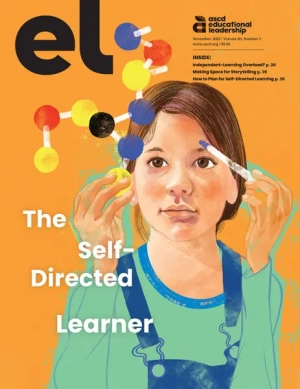 November 2022--The Self-Directed Learner The prolonged period of remote learning in 2020–21 reinforced the value of self-directed learning—but educators have long seen independent learning as a hallmark of student engagement and intellectual growth. This course will look at how schools can integrate instructional strategies that support self-directed work and exploration and help students take greater ownership of their own learning. Subtopics to be addressed include personalization, deeper learning, amplifying student voice and agency, academic self-monitoring, and problem-based learning. Click Here to buy this journal, go to ascd.org, or call 1-800-933-2723. Click Here to download the course syllabus.
November 2022--The Self-Directed Learner The prolonged period of remote learning in 2020–21 reinforced the value of self-directed learning—but educators have long seen independent learning as a hallmark of student engagement and intellectual growth. This course will look at how schools can integrate instructional strategies that support self-directed work and exploration and help students take greater ownership of their own learning. Subtopics to be addressed include personalization, deeper learning, amplifying student voice and agency, academic self-monitoring, and problem-based learning. Click Here to buy this journal, go to ascd.org, or call 1-800-933-2723. Click Here to download the course syllabus. -
 In the wake of the pandemic, challenging student behaviors are on the rise, causing frustration for teachers and raising questions about existing disciplinary policies and practices. This course will take a deep dive into the topic of difficult student behaviors—looking at possible causes and patterns—and explore ways educators can constructively address and resolve them while supporting students’ growth and dignity. The course will include whole-school approaches as well as best practices and solutions for the classroom. Click Here to buy this journal, go to ascd.org, or call 1-800-933-2723. Click Here to download the course syllabus.
In the wake of the pandemic, challenging student behaviors are on the rise, causing frustration for teachers and raising questions about existing disciplinary policies and practices. This course will take a deep dive into the topic of difficult student behaviors—looking at possible causes and patterns—and explore ways educators can constructively address and resolve them while supporting students’ growth and dignity. The course will include whole-school approaches as well as best practices and solutions for the classroom. Click Here to buy this journal, go to ascd.org, or call 1-800-933-2723. Click Here to download the course syllabus. -
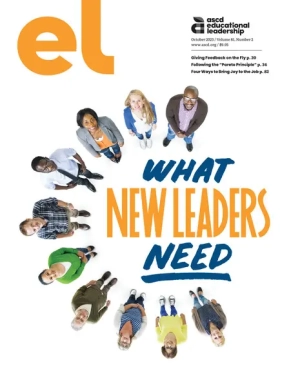 Whether they are principals, district administrators, or teacher leaders, newly minted leaders in education face steep challenges and require specialized support. This course will look at the demands facing new education leaders and how school systems can help them make more seamless transitions. It will also examine leadership skills development, onboarding mentorship programs, school-management best practices, and common personal and interpersonal challenges. Click Here to buy this journal, go to ascd.org, or call 1-800-933-2723. Click Here to download the course syllabus.
Whether they are principals, district administrators, or teacher leaders, newly minted leaders in education face steep challenges and require specialized support. This course will look at the demands facing new education leaders and how school systems can help them make more seamless transitions. It will also examine leadership skills development, onboarding mentorship programs, school-management best practices, and common personal and interpersonal challenges. Click Here to buy this journal, go to ascd.org, or call 1-800-933-2723. Click Here to download the course syllabus. -
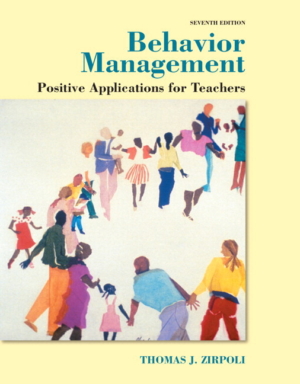
 If you have taken this course for graduate credit through ArmchairEd, you cannot take the same course for clock hours through ArmchairEdClockHours. Click Here to buy Better Than Carrots: Restorative Practices for Positive Classroom Management direct from the publisher. Click Here to buy Behavior Management: Positive Applications for Teachers direct from the publisher. This course provides a much-needed comprehensive and blended view of both positive behavior management and self-empowerment that addresses behavior by allowing students to correct it among themselves. Both school-wide strategies and individual strategies for positive behavior supports are addressed, while also focusing on how educators can develop unique behavior management strategies for individual students. It uses functional techniques, real-world classrooms, and practical information — all while covering the legal aspects of behavioral management, assessment strategies, strategies for special populations and diverse populations, age-related behavioral concerns, and the three-tier response-to-intervention approach. Furthermore, research shows that restorative practices are long lasting are wide reaching. The course provides a practical blueprint for creating a cooperative and respectful classroom climate in which students and teachers work through behavioral issues together. You will establish procedures and expectations for student behavior that encourages the development of positive interpersonal skills, development a non-confrontational rapport with the most challenging students, and implement conflict-resolution strategies that prioritize relationship building and mutual understanding over blame and retribution. Click Here to download the course syllabus.
If you have taken this course for graduate credit through ArmchairEd, you cannot take the same course for clock hours through ArmchairEdClockHours. Click Here to buy Better Than Carrots: Restorative Practices for Positive Classroom Management direct from the publisher. Click Here to buy Behavior Management: Positive Applications for Teachers direct from the publisher. This course provides a much-needed comprehensive and blended view of both positive behavior management and self-empowerment that addresses behavior by allowing students to correct it among themselves. Both school-wide strategies and individual strategies for positive behavior supports are addressed, while also focusing on how educators can develop unique behavior management strategies for individual students. It uses functional techniques, real-world classrooms, and practical information — all while covering the legal aspects of behavioral management, assessment strategies, strategies for special populations and diverse populations, age-related behavioral concerns, and the three-tier response-to-intervention approach. Furthermore, research shows that restorative practices are long lasting are wide reaching. The course provides a practical blueprint for creating a cooperative and respectful classroom climate in which students and teachers work through behavioral issues together. You will establish procedures and expectations for student behavior that encourages the development of positive interpersonal skills, development a non-confrontational rapport with the most challenging students, and implement conflict-resolution strategies that prioritize relationship building and mutual understanding over blame and retribution. Click Here to download the course syllabus. -
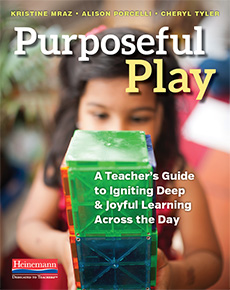 If you have taken this course for graduate credit through ArmchairEd, you cannot take the same course for clock hours through ArmchairEdClockHours. Click here to buy the book Purposeful Play direct from the publisher. Play helps students reach standards and goals in ways that in-seat instruction alone cannot. Play provides a type of environment that allows for rigorous learning, enabling practical ways to carry that mindset into all aspects of the curriculum. In this course, you will learn how the following: Optimize and balance different types of play to deepen regular classroom learning Teach into play to foster social-emotional skills and a growth mindset Bring the impact of play into all your lessons across the day. The course provides a host of lessons, suggestions for classroom setups, helpful tools and charts, curriculum connections, teaching points, and teaching language. Each fosters mature play and makes every moment in your classroom instructional. Click Here to download the course syllabus. This is, by far, the most engaging textbook I'v ever read. I've never had a textbook that "I couldn't put down". I actually read this entire book in one sitting. Reflecting on the chapters and concepts in the text helped me clarify topics that I'd like to incorporate into my daily teaching practice. This book provided a new perspective on my teaching and helped me set new goals. Because of this book, I feel inspired to continue to advocate for unstructured, child-initiated play in my classroom and school. I feel energized by what I learned in this book. LC, New Hampshire
If you have taken this course for graduate credit through ArmchairEd, you cannot take the same course for clock hours through ArmchairEdClockHours. Click here to buy the book Purposeful Play direct from the publisher. Play helps students reach standards and goals in ways that in-seat instruction alone cannot. Play provides a type of environment that allows for rigorous learning, enabling practical ways to carry that mindset into all aspects of the curriculum. In this course, you will learn how the following: Optimize and balance different types of play to deepen regular classroom learning Teach into play to foster social-emotional skills and a growth mindset Bring the impact of play into all your lessons across the day. The course provides a host of lessons, suggestions for classroom setups, helpful tools and charts, curriculum connections, teaching points, and teaching language. Each fosters mature play and makes every moment in your classroom instructional. Click Here to download the course syllabus. This is, by far, the most engaging textbook I'v ever read. I've never had a textbook that "I couldn't put down". I actually read this entire book in one sitting. Reflecting on the chapters and concepts in the text helped me clarify topics that I'd like to incorporate into my daily teaching practice. This book provided a new perspective on my teaching and helped me set new goals. Because of this book, I feel inspired to continue to advocate for unstructured, child-initiated play in my classroom and school. I feel energized by what I learned in this book. LC, New Hampshire -
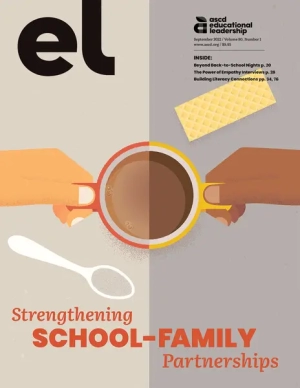 September 2022--Strengthening School-Family Partnerships If there’s one thing the COVID-19 pandemic has taught us, it’s that schools, families, and local community groups must work together. This issue will explore how schools can strengthen both school-family relationships and local community partnerships. What has changed since the pandemic in educators’ understanding of family engagement? How can schools better leverage these relationships to work through conflict, support student growth, strengthen curriculum, and sustain learning initiatives? And, going a step further, how can schools better integrate community resources and services—including health clinics, social service agencies, and local businesses—to expand supports and programming for students and families? A key focus will be on whole child support and development in the wake of the pandemic. Click Here to buy this journal, go to ascd.org, or call 1-800-933-2723. Click Here to download the course syllabus.
September 2022--Strengthening School-Family Partnerships If there’s one thing the COVID-19 pandemic has taught us, it’s that schools, families, and local community groups must work together. This issue will explore how schools can strengthen both school-family relationships and local community partnerships. What has changed since the pandemic in educators’ understanding of family engagement? How can schools better leverage these relationships to work through conflict, support student growth, strengthen curriculum, and sustain learning initiatives? And, going a step further, how can schools better integrate community resources and services—including health clinics, social service agencies, and local businesses—to expand supports and programming for students and families? A key focus will be on whole child support and development in the wake of the pandemic. Click Here to buy this journal, go to ascd.org, or call 1-800-933-2723. Click Here to download the course syllabus. -
 In this special issue, selected experts, thought leaders, and practitioners will examine the key challenges in schools today (as determined by a survey of educators). The authors, chosen based on their areas of expertise, will provide context, solutions, and implementation approaches—making the issue a powerful “user’s manual” for teachers and school leaders. Possible topics include “learning loss,” teacher retention, student trauma, racial opportunity gaps, reading proficiency, classroom management, and technology alignment. Click Here to buy this journal, go to ascd.org, or call 1-800-933-2723. Click Here to download the course syllabus.
In this special issue, selected experts, thought leaders, and practitioners will examine the key challenges in schools today (as determined by a survey of educators). The authors, chosen based on their areas of expertise, will provide context, solutions, and implementation approaches—making the issue a powerful “user’s manual” for teachers and school leaders. Possible topics include “learning loss,” teacher retention, student trauma, racial opportunity gaps, reading proficiency, classroom management, and technology alignment. Click Here to buy this journal, go to ascd.org, or call 1-800-933-2723. Click Here to download the course syllabus.


